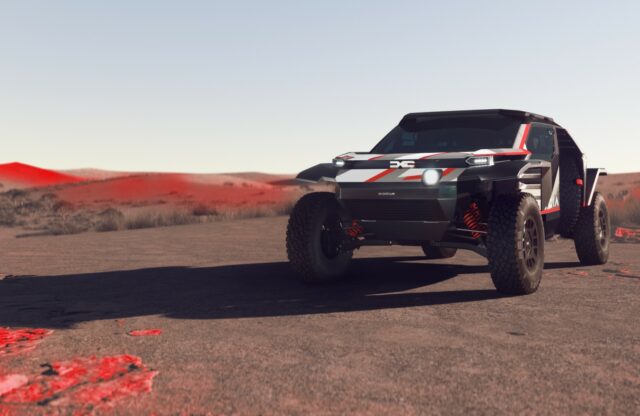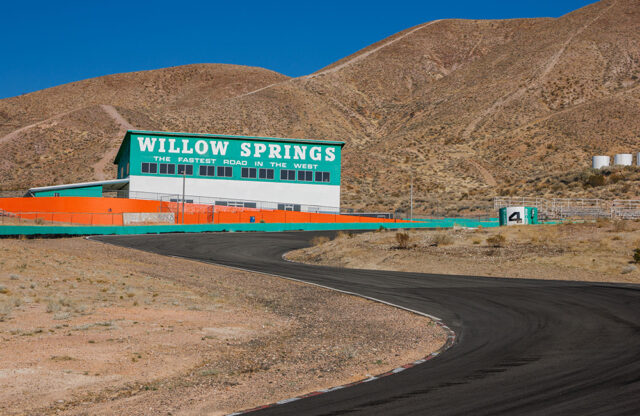WORDS: ALEX GOY | PHOTOS: DACIA
Yes, that is a T1 Ultimate-spec Dakar Rally Raid car, and yes, it has a Dacia logo on its nose… and its roof. The Romanian manufacturer has found time in its busy schedule of making affordable, practical cars to develop a vehicle to tackle the world’s toughest rally. With the charmingly named Sandrider, Prodrive engineering and its triple threat of Dakar veterans – Sébastien Loeb, Cristina Gutiérrez and Nasser Al-Attiyah – Dacia wants to win.
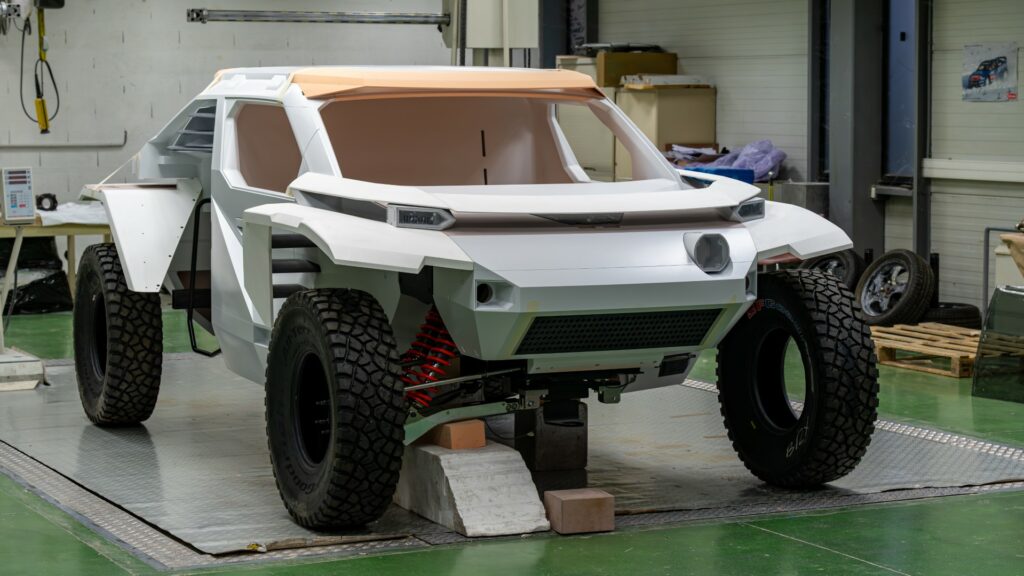
The Sandrider looks a little like the firm’s recent Manifesto concept car, which is no surprise – that’s what it took inspiration from. You’re unlikely to see many of its design quirks heading over to the next-generation Jogger, but for the Sandrider’s drivers these are more than just cool things to look at. Dacia’s design team worked with them to develop a car to suit the drivers’ needs. Before the car was a reality, they spent time in a VR mock-up to see how they got on with it.
This led to some neat solutions to things you and I wouldn’t really think about. Each driver will have their own preferences for cabin layout, rather than give them a ‘one size fits all’ job, Dacia has developed a modular dash (thanks to inspiration from Dieter Rams-designed modular stereos) so they can choose their own adventure. The drivers wanted sealed bags for gear in the cabin, so that’s what they’re getting. The seats – as cool as Dacia’s designs are, the finished car will get FIA-approved buckets – won’t be Alcantara, but instead covered in an easy-to-clean material with great temperature-regulation and moisture-wicking abilities.
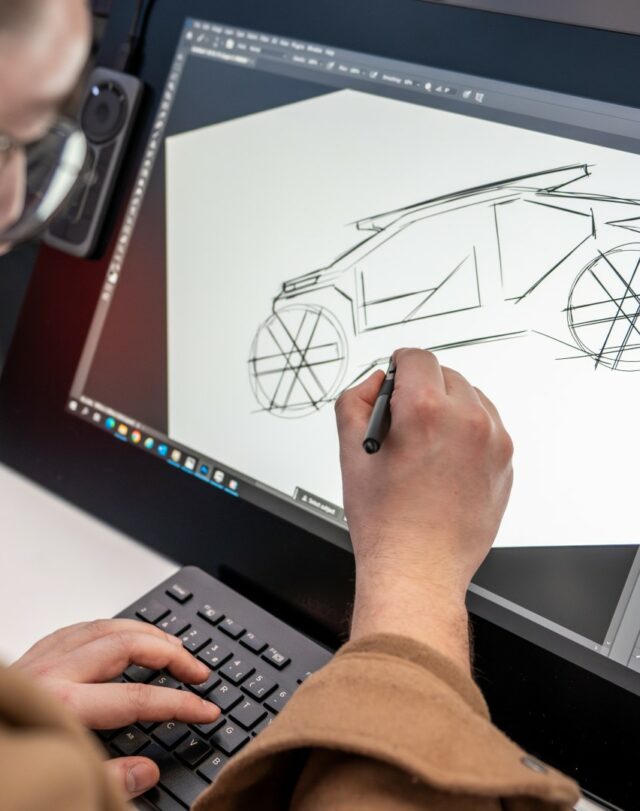
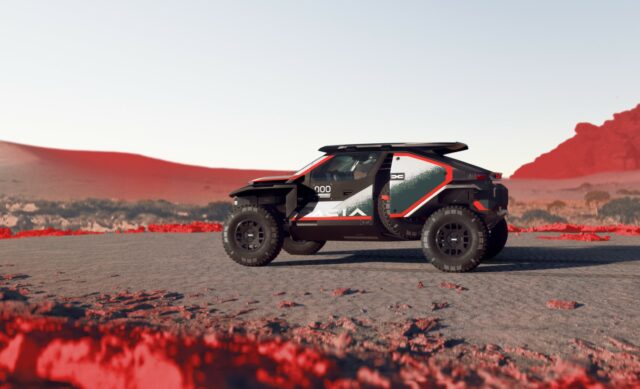

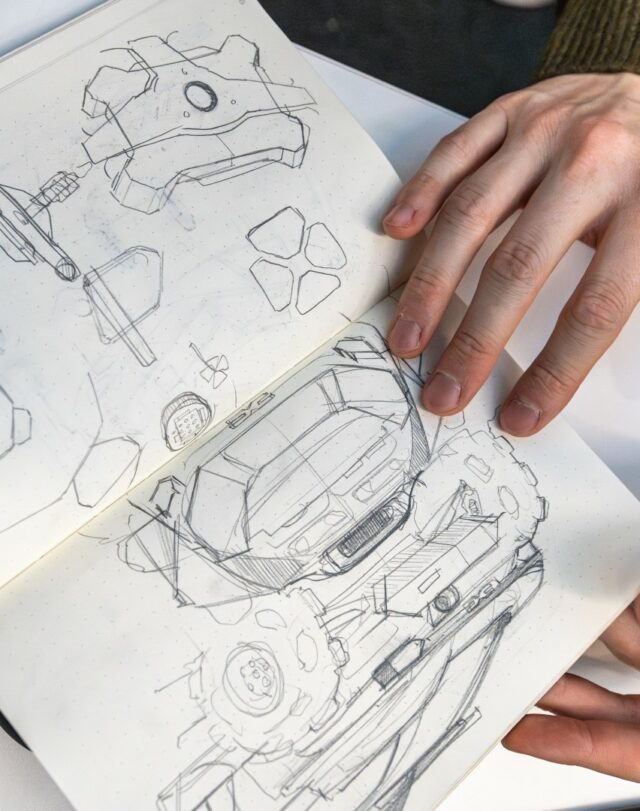
The Sandrider’s exterior may look complicated, but it’s all practical. Sand boards slot neatly into the bodywork at the rear for ease of access, while another four fit in the Sandrider’s fold-down boot – it folds down so it can be used as a bench in the desert. When (and it is definitely when) a tyre gets a hole in it, rather than have a spare hidden in some inaccessible cavity, there’s one strapped into each side of the car.
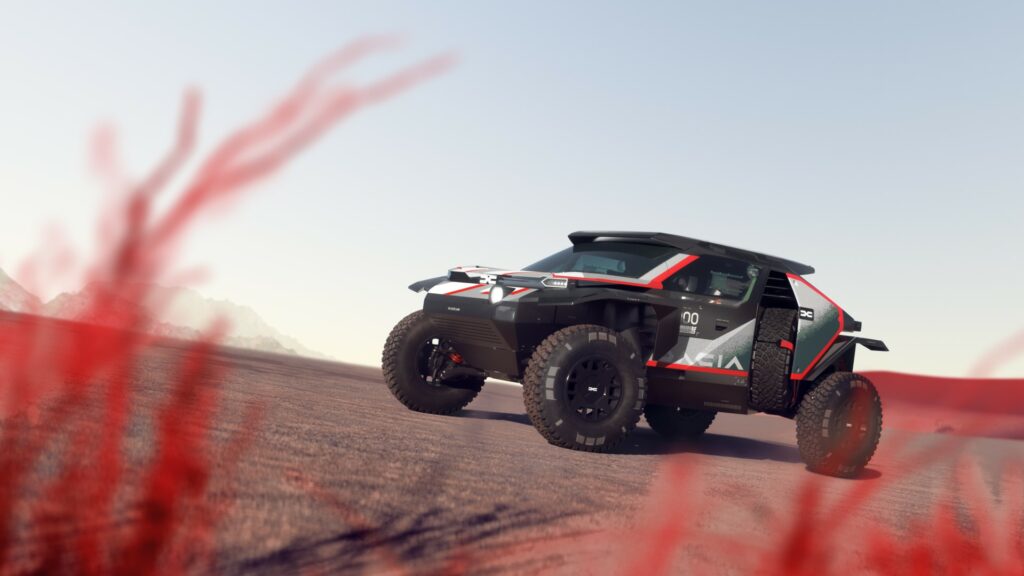
You might expect the Sandrider to be painted in temperature-savvy white, but thanks to a special, patented IR material in the carbonfibre panels, it’s kept up to 35º cooler than it otherwise would be.
When it comes to drag, you might expect the pointiest of pointy cars to be something of a lump, but it really isn’t. In fact, there are three big aero channels over the front of the vehicle – one through the wheelarch and into the mid-mounted radiator, one over the top and down over the rear deck, and one to its roof spoiler. Downforce, says Dacia, won’t be a problem here.
With Prodrive on board, you’ll perhaps not be surprised that the basis for the Sandrider is the Hunter, in top-tier T1 Ultimate spec. In the Sandrider’s bowels is a twin-turbo 3.0-litre V6 pumping out 360bhp and 397lb ft, which should be healthy enough to tackle a dune or two. The car will ride with 350mm of suspension travel on 17-inch wheels shod with 37-inch tyres.
Testing begins later this year, before a competition debut at the Rallye du Maroc in October, followed by Dakar 2025 and the rest of the Rally Raid season. In the production car market, Dacia has always been something of an underdog – and perhaps the same may be suggested of it in Dakar. Let’s wait and see how it does, shall we?
